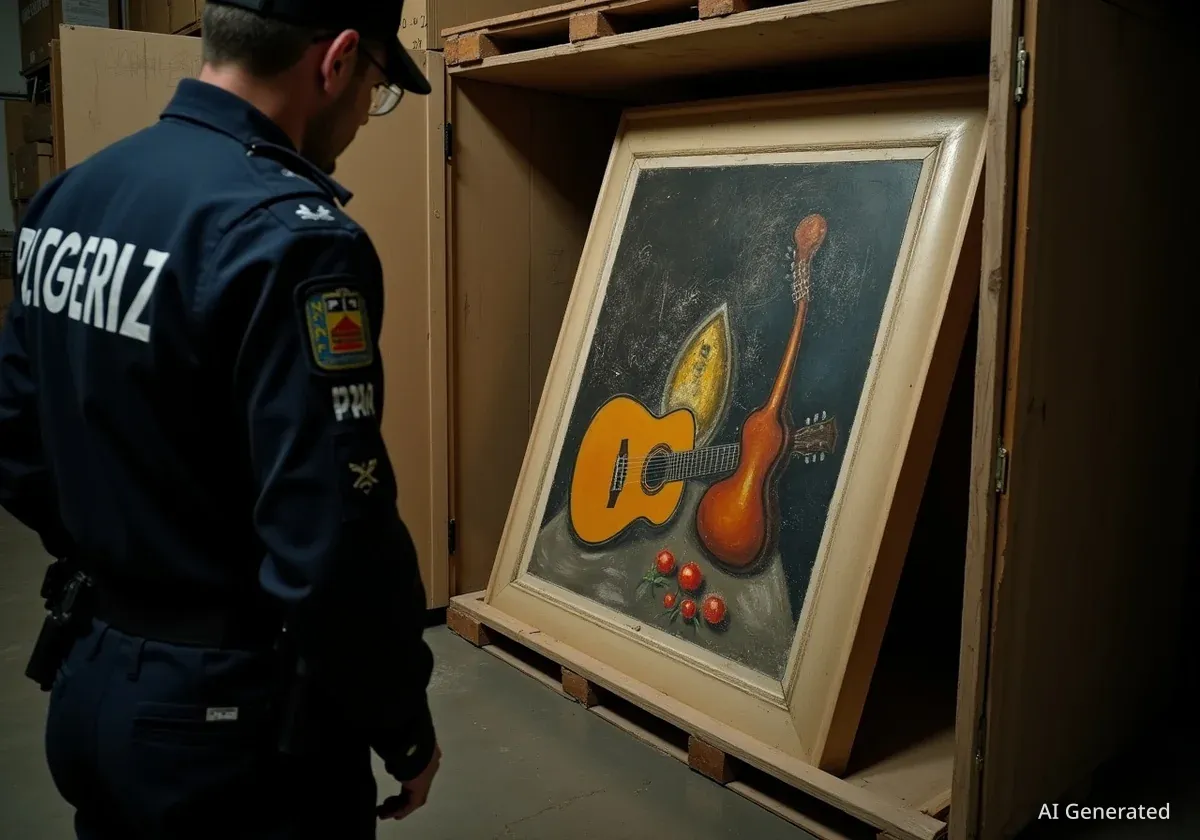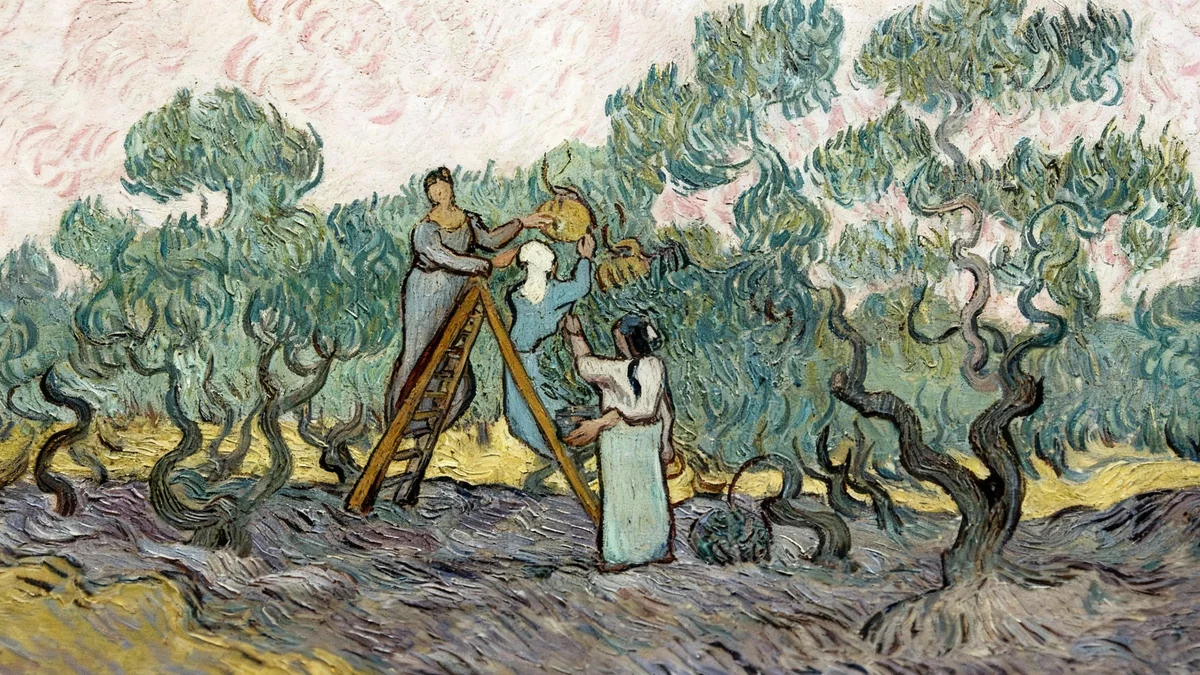A Picasso painting reported missing earlier this month has been found in a Madrid storeroom. The artwork, 'Still Life with Guitar,' was intended for an exhibition in Granada but never made it onto the transport lorry. Spanish police located the piece after an extensive search.
Key Takeaways
- 'Still Life with Guitar,' a Picasso painting, was found in Madrid.
- The artwork was reported missing ahead of a Granada exhibition.
- Police believe packaging issues prevented its initial transport.
- The painting is valued at approximately €600,000.
The Disappearance and Initial Search
The alarm was raised when 'Still Life with Guitar,' a gouache from 1919, did not arrive at its intended destination. The painting was part of a larger consignment of 56 artworks. These pieces were scheduled for display at the Centro Cultural CajaGranada in Granada.
The transport operation began on September 25. Video surveillance captured the loading of the entire consignment from a Madrid depot. However, a full check of the contents was not possible immediately upon arrival.
Fact Check
The missing Picasso, 'Still Life with Guitar,' is a gouache from 1919. Gouache is a type of opaque watercolor paint.
The CajaGranada Fundación, the exhibition organizer, confirmed that initial checks were performed. Consignment notes were signed, but the complete unpacking process was deferred. This was planned for October 6, the day of the exhibition's inauguration.
It was on this specific date that the absence of the Picasso painting was first noticed. A formal complaint was then lodged with the National Police on October 10. This initiated a wide-ranging investigation.
Police Investigation and Discovery
The National Police immediately launched an extensive search. They issued a missing alert for the painting on Interpol's international database. This database contains descriptions and images of over 57,000 stolen or missing art objects. Despite this international alert, significant clues remained elusive.
Art Market Thefts
The art market occasionally experiences high-profile thefts. These incidents highlight the ongoing challenges in securing valuable artworks during transport and storage. Police forces globally work to recover stolen pieces and prevent future incidents.
Investigators then focused on the delivery load itself. They found discrepancies with the packaging numbers. This led them to re-examine the original Madrid depot. Forensic police officers inspected the storeroom.
Their inspection confirmed the painting's presence. It had not made it onto the transport lorry. The main police hypothesis is that the artwork simply remained at the source location due to an oversight.
"The police investigation focused on re-examining the original dispatch point, which proved crucial in locating the missing artwork."
Value and Future Implications
'Still Life with Guitar' is valued at approximately €600,000. Its recovery marks a successful resolution for Spanish authorities. The incident highlights the importance of detailed checks during art logistics. Proper numbering and exhaustive verification processes are vital for high-value consignments.
- September 25: Picasso painting part of 56 works leaves Madrid depot.
- Early October: Consignment arrives in Granada.
- October 6: Absence of Picasso painting detected during unpacking.
- October 10: Formal complaint lodged with National Police.
- October 24: 'Still Life with Guitar' found in Madrid storeroom.
The painting's safe return ensures it can eventually be exhibited. This outcome is a relief for the art community and the public. It also serves as a reminder of the complexities involved in moving valuable cultural assets.
This case differs from more notorious art heists, such as those at the Louvre museum. Here, the painting was not stolen but rather misplaced. The police's thorough investigation, despite initial difficulties, led to its successful recovery.
Ensuring clear communication and strict protocols for art transportation remains a priority for institutions. This prevents similar incidents in the future. The art world relies on secure handling to protect priceless works.




